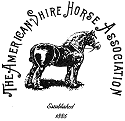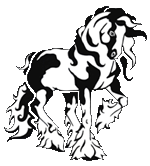ABOUT THE BREEDS at
Chestnut Oak Farm
GYPSY HORSE
The Gyspy Horse known in America as the Gypsy Vanner or the Gypsy Cob was developed by the Gypsies or Romany folk of England and Ireland. They are also called Irish Cobs, Tinker Horses, and Romany Horse. For nearly 100 years the Gypsies have bred and used these colorful horses to pull their ornate caravans and carts. Many believe the Gypsy Horse sprung from crossings of native Dale or Fell ponies as well as the heavier draft breeds of Shire and Clydesdale. These hardy horses were bred to be strong, docile, and hard working, surviving only on weeds and grasses growing alongside the roads that they traveled. They were often cared for by children. The Gypsy Horse is built like a small draft horse, usually standing between 13 and 15 hands, with average size being 14.1hh. They are stocky and short backed, with a short muscular neck, sweet head and kind eye. They exhibit an intelligent, docile, and kind disposition. Gypsy Horses are known for their incredible amounts of hair with long flowing manes, tails that drag the ground and an abundance of silky feather. They come in nearly all colors and most have pinto markings. Currently there are four registries in America that register the Gypsy Horse, The Gypsy Cob & Drum Horse Association, The Gypsy Vanner Horse Society, The Gypsy Horse Registry of America, and The Gypsy Horse Association. This rare and exotic breed is now excelling in nearly all riding disciplines and make wonderful all around family horses.
SHIRE HORSE
The Shire is one of the largest horses in the world and originated in the "Shires" of England. They are a descendant of the "Old English Black Horse" whose ancestors were the great horses of the medieval era. It stands between 16.2 hands and 19 hands, with the average being 17.1 hands and may be black, brown, bay, grey, or chestnut (rare) in color. The Shire is an extremely strong, large-barrelled horse with long legs and great amounts of hair and feather on the lower legs, resembling the well-known Clydesdale horse. The average Shire weighs 1 ton and is capable of pulling a 5 ton load. These magnificant animals have a gentle, kind, and docile disposition. Very strong horses, they were used to work the land for agriculture in several parts of our country, but the versatile Shire is proving to be an excellent athlete and excels in a variety of disciplines, including Dressage, Jumping, English/Western Pleasure, Driving, and given their calm, easy-going nature make great Trail horses. They are forward moving with both knee and hock action. The Shire is a rare breed of horse, with an estimated fewer than 2,000 animals in the worldwide population. It is on the "critical" list of the American Livestock Breeds Conservancy and is considered "at risk" by the Rare Breeds Survival Trust in Great Britain, its native country. Currently there is one registry in America that registers the Shire, the American Shire Horse Association.
DRUM HORSE
Historically the Drum Horse was used to carry the drums in the Queen of England's various regimental bands and processions and were named after the "job" they performed. These horses carry two large kettle Drums, plus a fully outfitted rider, through huge crowds while being controlled only by the reins attached to the rider's feet so their hands are free to play the drums. Drum Horses must be strong enough to carry the heavy kettledrums and the drummer and also remain calm and quiet in large crowds during ceremonies and parades. They are still used by the Queen of England today. This rare and exotic horse is being developed into a breed here in America and is a combination of any of the following breeds: Shire, Clydesdale, and Gypsy Horse, where the Gypsy horse does not exceed 50% of the total make-up or fall below 6.25%. Horses with greater than 50% Gypsy or less than 6.25% Gypsy will be placed in the Foundation Drum Book. A Premium Drum Horse is one that stands 16hh or greater. Considered one of the most beautiful horses in the world, they are a heavy riding horse and highly versatile athlete with great size, movement and hair and are suitable for many disciplines, including Dressage, Jumping, Eventing, Hunter, English/Western Riding, Driving, Parades, and Trail Riding. Drum Horses can be piebald (pinto), skewbald, and solid in pattern and can be of any color. Currently there are three registries in that register the Drum Horse, International Drum Horse Association, Gypsy Cob & Drum Horse Association, and Gypsy Horse Association.
BRABANT HORSE (European Belgian)
Brabants or European Belgians are the foundation horse for the American Belgian. The Brabant and American Belgian share a similar origin in Europe, but after World War II the Brabant was bred in Europe to be stocky, short legged, and heavy bodied, and in the U.S. the Belgian was bred to be long legged, tall, and lighter bodied. The Brabant is a rare, exotic breed and is raised in several European countries. It goes by different names depending on the country. In southern Belgium, it is called the Cheval de trait, in northern Belgium, it is called the Belgisch Trekpaard, and the French call it the cheval Trait du Nord. Brabants are the heaviest, most docile of all draft breeds. They have a strong stocky body, thick muscular neck, large but neat head, and are heavy boned. Average height range is 15.2 hands to 17 hands high. Common colors are bay roan, blue roan, strawberry roan, red bay, and brown. These hardy animals are very easy keepers, with a quiet, gentle nature. They are very versatile and many are trained to ride and drive as well as work the fields. The Belgian Draft Horse Corporation registers the Brabant horse in America.

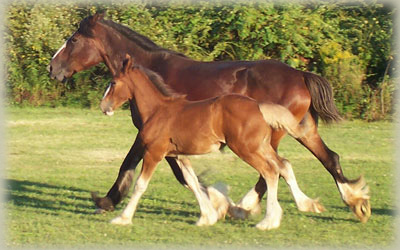

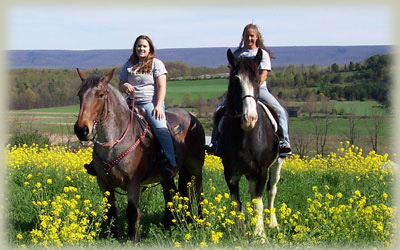
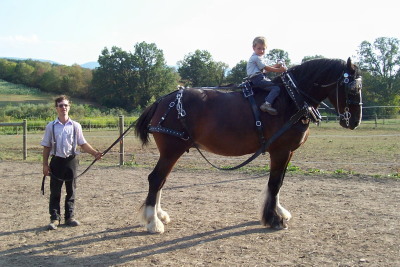
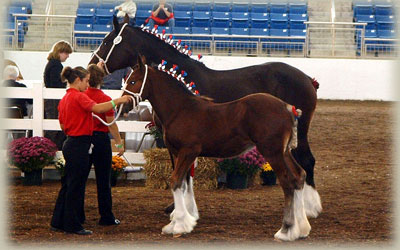
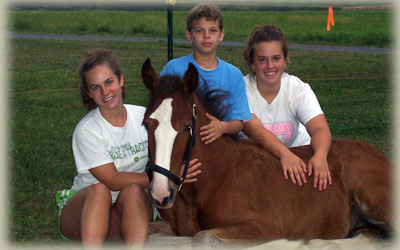
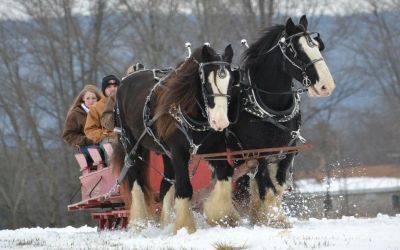
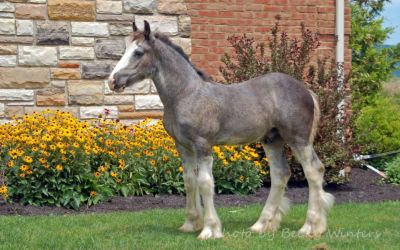
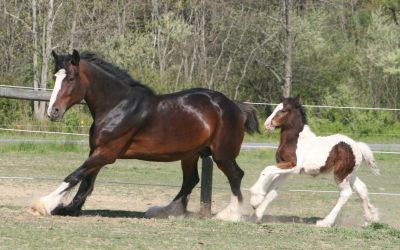

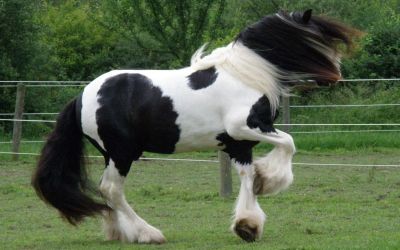

 (400x256).jpg)
.jpg)

